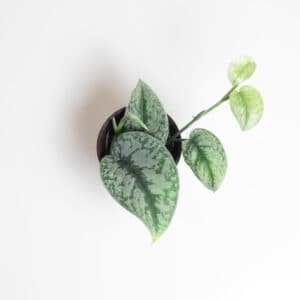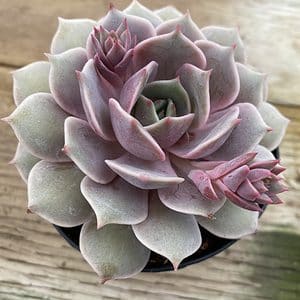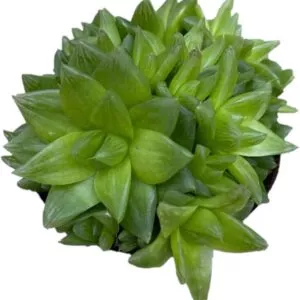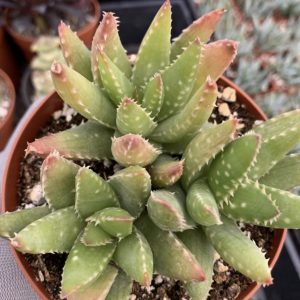No products in the cart.
Table of Contents
Wow, if this is the first time you lay your eyes on the Graptoveria opalina succulent we already know you are in love with it.
This succulent plant is familiar with its beautiful leaves displayed in different shades. The fantastic thing is it produces yellow flowers in spring to brighten up any garden or living space.
Today we will look a bit closer at the care for this beautiful succulent plant.

Graptoveria Opalina Care
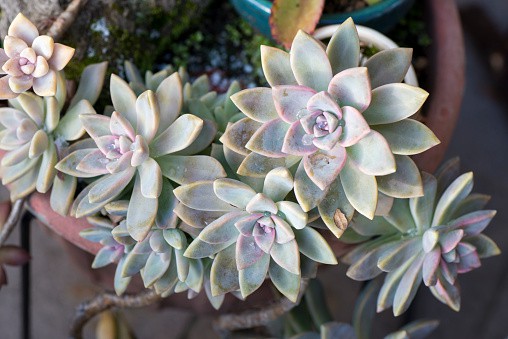
Since 1988 when Robert Grim, a succulent breeder, created this popular cultivar Opalina it has become an instant hit found in many succulent growers’ gardens and homes. You can grow the Graptoveria opalina as a succulent indoors or outside.
The succulent is a mixture of the Graptopetalum amethystinum and Echeveria colorata. But if you are not yet the owner of this baby, you will find caring for it a pleasure, as most other succulent lovers do. The leaves are coated with dust to protect them against the direct sun.
The leaf color changes from pale blue-green leaves to ones covered in pink tones to orange and light purple. These vibrant colors appear mostly in cooler months, while in summer, it displays grey-blue with pastel shades.
During spring and summer, your Graptoveria opalina flowers appear on a tall stalk, which has a clumping growth. You will notice new offsets forming at the base of the mother plant. Neither is the succulent cold hardy and best kept safe from the cold.
But this plant, with its beautiful blue-green colors, is easy to grow and care for.
The Type of Soil That Graptoveria Opalina Succulents Needs
Whether growing succulents in rock gardens or hanging baskets, it needs soil that allows excess water to drain freely. Hence, it helps to choose a cactus or succulent potting mix to prevent root rot protecting the roots to remain healthy.
A succulent potting soil of sand and perlite will keep the soil aerated and light and retain the needed moisture for your new plant to thrive. Still, if grown outdoors, it can handle poor soils, but a gritty soil to porous one is better.
So, ensure well-draining soil in a pot with enough drainage holes.
Light Requirement for Graptoveria Opalina Yellow Flowers
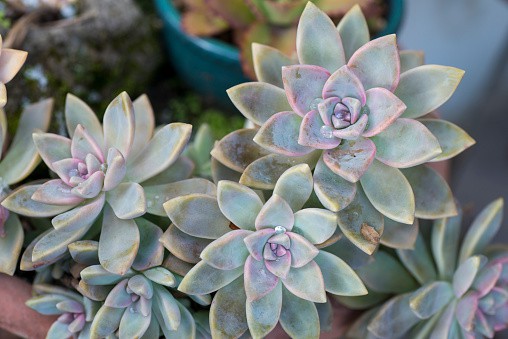
When you plant Graptoveria opalina outdoors, you can grow them in partial sun with little care. But the full sun is better if you want your Opalina to look its best. The reason is that the leaf coloration varies depending on the light it receives.
When you grow it as potted plants in partial shade, the foliage remains a powdery blueish-green. Yet, when in enough sun, the foliage turns to pink tones around the edges and on the leaf tips. The same applies when you keep them indoors, as they need direct sunlight to display those gorgeous colors.
How To Water Graptoveria Opalina to Prevent Root Rot
As important as having excellent drainage with sandy soil and perlite mixed in, overwatering can lead to root rot. The best technique to use is the soak-and-dry method. Hence, only water when the soil feels completely dry.
You may need to water more in spring and fall and refrain from watering in winter. Another thing to remember is not to get your succulent leaves wet, as it can also result in root rotting. Another crucial point is that when the water drains from the pot, remove any excess water in the catch saucer to prevent wet feet.
Fertilizer Needs
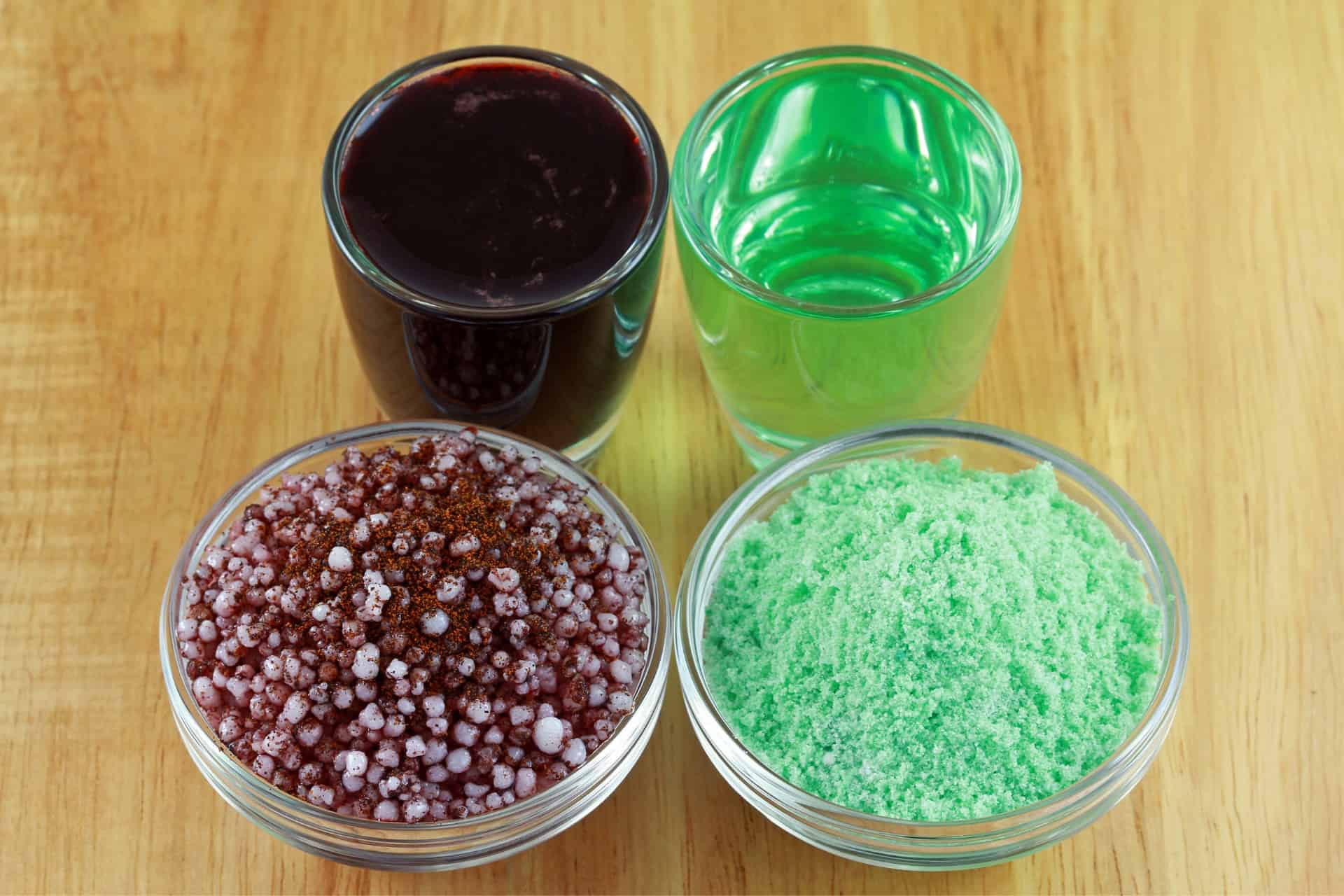
As with typical watering care, your subtropical succulent only needs feeding once at the start of the growing season. We recommend a balanced fertilizer for succulent plants diluted to a 1/4 strength.
Temperature and Humidity Levels
Regarding temperatures and humidity, there is still a debate about how resilient it is to grow Graptoveria opalina in the USDA hardiness zones 10a to 11b outdoors. But it grows well in zone 9b.
The hardiest temperature is to 30°F with some tolerance down to 25°F. Yet, in some cases, the Opalina has survived some temperatures to 20°F. Still, there is no substantial evidence to prove this, and best to grow your succulent indoors if you live in freezing temperatures.
As with most succulents, it does not enjoy a very high humidity level as the leaves are known to store water.
Propagation of Graptoveria Opalina
When you care for Graptoveria opalina, providing it with bright light and your plant matures, there are a few ways to propagate Graptoveria opalina.
Leaf Cuttings
You can easily twist or pull one off the mother rosette. It is crucial to retrieve a whole leaf and not only a part. After removing some leaves, you can leave them to dry for two days to callus. Then plant them in well-drained succulent soil.
Planting Offsets

Like leaf cuttings, you can remove the pups or offsets growing at the base of the parent plant. Place the separate offsets in a dry place to callus and plant lightly in some succulent soil and water.
Graptoveria Varieties
As with the Opalina succulent, you can find wide other varieties in the genus to add to your garden. Here are our favorites.
Graptoveria amethorum
It is a slow-growing succulent hybrid between Graptopetalum amethystinum and Echeveria purpusorum. The plant reaches three inches tall and has compact rosettes in a grayish-green color. With enough sunlight, the foliage turns red or a blush pink. During the blooming period, you see pink flowers.
Graptoveria bashful
Another beautiful succulent, also known as the pink ruby, is another sun-loving plant with minty green leaves. As temperatures cool down and it receives direct sunlight, the leaves turn bright pink and display pink blooms.
Graptoveria debbie

The Debbie succulent plant is one gorgeous species to have. The plant grows arrowhead-shaped leaves with a touch of frost pink. The leaves form tight rosettes, and the hues become more intense when temperatures cool down with bright sun exposure.
In spring, you see these beautiful apricot-colored blooms.
Common Problems with Graptoveria Opalina
One of the best news any plant parent loves is that when you care for Graptoveria opalina, it is a fast grower and non-toxic for kids and pets. But as with other succulent plants, it is prone to rot and pests. Common insects are aphids and mealybugs, becoming a problem when overwatered.
Where to Buy Graptoveria Opalina Succulent Plant?
The fantastic news is that Graptoveria opalina is not a rare plant and is available and most local nurseries. Still, you need not travel outdoors as you can order this gorgeous succulent plant here with us at Plantly.
Whether you want to buy, sell or simply reach out to other plant enthusiasts, Plantly is the right place to be!
In stock In stock In stock In stock
$20.00
Sold By:
Gardengineering
$25.00Scindapsus Pictus Exotica | Philodendron Silver | Satin Pothos
Rated 4.96 out of 5 based on 24 customer ratings00
Sold By:
Gardengineering
$24.99
Sold By:
Succulent Oasis
$30.00Medium Succulent Plant ‘Angel Kissed’.
Rated 4.84 out of 5 based on 352 customer ratings00
Sold By:
Succulent Oasis
$12.00
Sold By:
Beauties & Beasts
Succulent -Haworthiopsis cymbiformis
Rated 4.83 out of 5 based on 24 customer ratings00
Sold By:
Beauties & Beasts
$14.00
Sold By:
Cacti and Exotica
Aloe Crosby
Rated 4.98 out of 5 based on 59 customer ratings00
Sold By:
Cacti and Exotica
